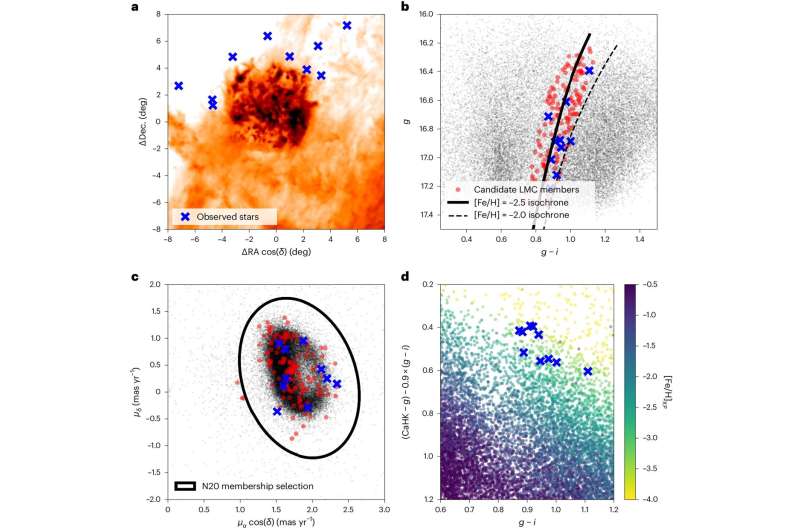In the vast expanse of the cosmos, amid the dance of celestial bodies and the birth and death of stars, lies a profound tale of cosmic evolution. At the heart of this narrative are the stars—the celestial forges that sculpted the universe we inhabit today. Among them, the most ancient stars, born from the primordial soup of hydrogen and helium, hold the secrets of our cosmic origins.
While the first generation of stars remains elusive, shrouded in the mists of time, scientists have unveiled a remarkable discovery: a star from the second generation that originated in a distant galaxy. This celestial wanderer, nestled within the folds of the Large Magellanic Cloud LMC, offers a tantalizing glimpse into the early epochs of galactic history.
The journey to uncover these ancient stellar relics is not for the faint of heart. Dr. Anirudh Chiti, a postdoctoral fellow at the University of Chicago and lead author of the study, specializes in the field of stellar archaeology—an endeavor that seeks to unravel the mysteries of the universe’s formative years. “We want to understand what the properties of those first stars were and what were the elements they produced,” explains Chiti.
Yet, the quest to unearth these cosmic artifacts is akin to fishing needles out of haystacks. The second-generation stars, though ancient by terrestrial standards, are exceedingly rare, scattered like cosmic gems across the tapestry of space. Nevertheless, their significance cannot be overstated. These stellar fossils, born in the aftermath of their primordial progenitors, preserve the chemical imprints of bygone epochs, offering astronomers a portal to the distant past.
The discovery of a second-generation star within the LMC—a celestial entity born beyond the confines of our own Milky Way galaxy—is a testament to the dynamic nature of the cosmos. This stellar voyager, harkening back to a time when galaxies roamed freely before succumbing to the gravitational embrace of larger cosmic behemoths, provides a unique vantage point from which to unravel the mysteries of cosmic evolution.
What sets this celestial wanderer apart is its elemental composition—a cosmic fingerprint that bears witness to its ancient lineage. With significantly lower levels of heavy elements compared to its counterparts in the Milky Way, this star offers tantalizing clues about the conditions prevailing in its distant galactic homeland. The scarcity of carbon relative to iron hints at a divergent evolutionary path—one that challenges our preconceived notions of cosmic uniformity.
As astronomers continue to chart the celestial landscape of the LMC and beyond, each discovery unveils new chapters in the cosmic saga. The intricate interplay of stars, galaxies, and cosmic forces paints a vivid portrait of cosmic evolution—a narrative woven across billions of years and countless light-years of space.
Dr. Chiti and his colleagues are poised to embark on further expeditions into the cosmic hinterlands, armed with powerful telescopes and a spirit of exploration. Their quest to map out the ancient stellar populations of the LMC promises to shed light on the early epochs of galactic history, offering a glimpse into the cosmic crucible where stars are born, evolve, and ultimately shape the destiny of the universe.
As we stand on the precipice of cosmic discovery, gazing into the depths of space, each twinkling star serves as a beacon of hope—a reminder of our enduring quest to unravel the mysteries of the cosmos and glimpse the wonders that lie beyond the veil of the night sky.
